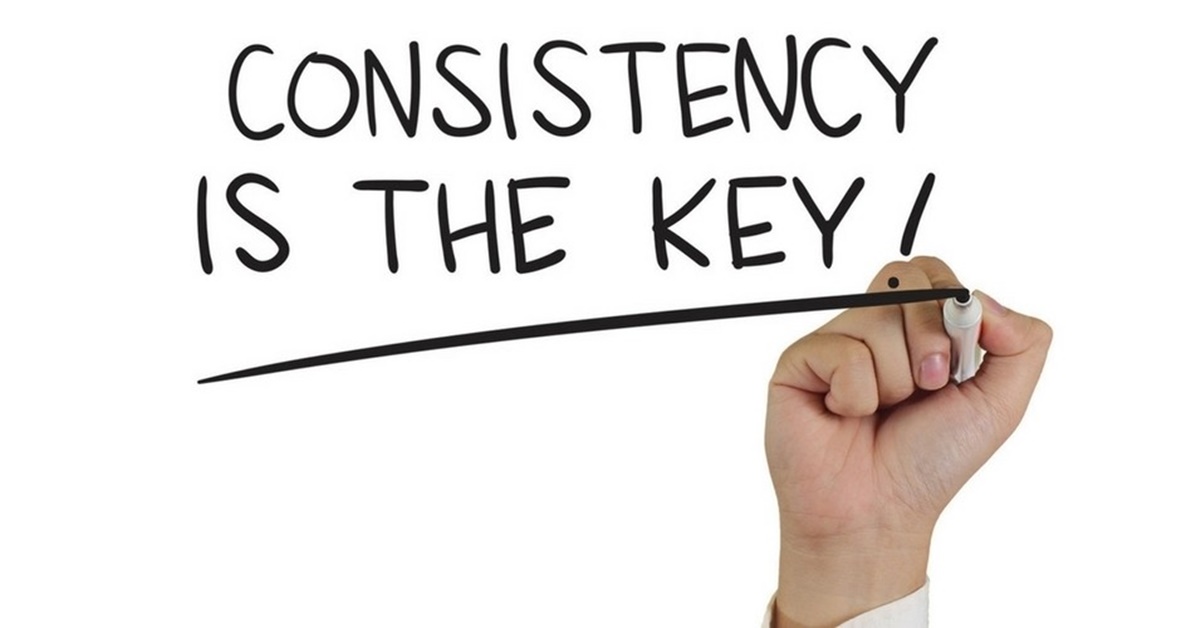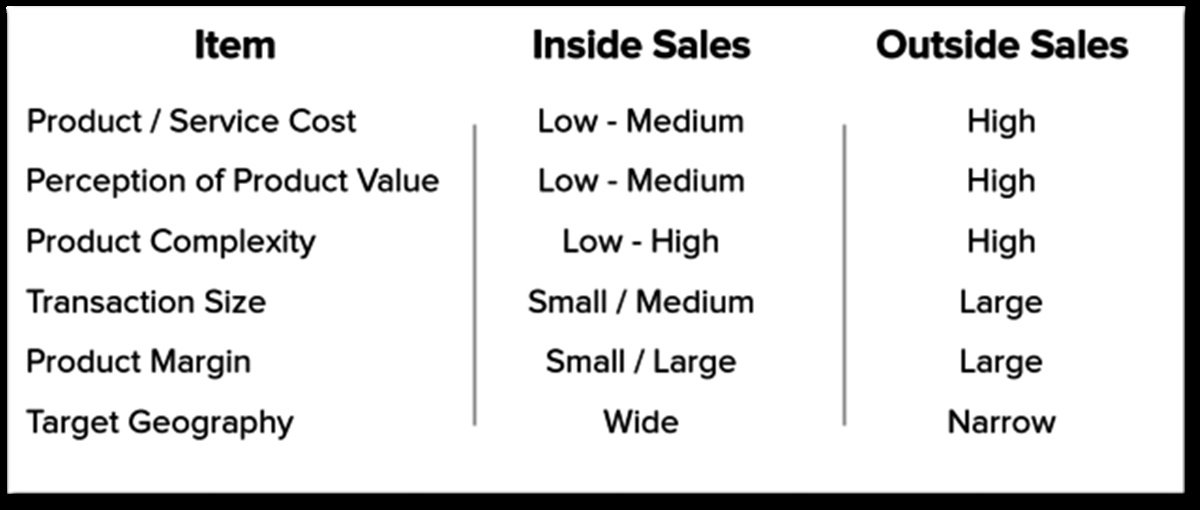Inside Sales vs Outside Sales: What’s the Difference?
Inside Sales and Outside Sales are two crucial concepts that shape the structure of a company’s sales department.
People often argue that these two strategies are at odds with each other. However, in today’s market, these two sales roles blend and become an essential part of the sales organization structure. Let go ahead with AVADA to find out more about Inside Sales vs. Outside Sales: What’s The Difference?.
Inside sales vs. outside sales definition: What’s the main difference?
Inside sales definition
Inside Sales is the way employees sell products or services and reach customers via phone, email, or Internet. Inside Sales is also known as remote sales or virtual sales.

In the late 1990s or early 2000s, the term “Inside Sales” was used to mark the difference between Inside Sales and Outside Sales. Unlike Outside Sales employees, Inside Sales employees often do not have to go out to find and meet outside customers. However, they still actively contact potential customers and can offer by phone.
The company can also treat calls from potential customers like Inside Sales. Also, a company may outsource a third party to its Inside Sales activity instead of doing it itself.
Unlike telemarketers calling customers under a pre-written scenario, Inside Sales representatives are creative and methodically trained. They define sales strategies to sell products and services to customers.
Sometimes, Inside Sales and Outside Sales activities can work together to deliver higher results. For example, an Inside Sales employee in one department can handle related stuff and organize external meetings with a partner for Outside Sales employees.
Outside sales definition
Outside Sales refers to the sale of a product or service in which salespeople go out to meet and communicate with potential customers.

Outside Sales experts tend to work independently outside the office and in a teamwork environment. They often go out to meet customers in person, as well as maintain relationships with existing customers.
Outside Sales tend to operate without a formal schedule, which can provide flexibility but also means that salespeople are always on hand to meet customers’ needs. Outside Sales employees, for example, regularly have to respond and adjust schedules according to customer requirements, such as changes related to postponement and cancellation.
Outside Sales experts must manage their travel to avoid unexpected delays and other related issues. Besides, because outside sales professionals meet face-to-face with potential customers, they must pay more attention to appearance. They must be willing to create an open and relaxed atmosphere all the time.
Maintaining an Outside Sales team can be costly, as companies often have to provide Outside Sales employees with travel, housing, food, and entertainment costs. In some industries, Outside Sales forces are necessary because customers will not make purchasing decisions only with inside sales strategies.
The main difference
After reading the concept, we probably all realize the most significant difference between Inside Sales and Outside Sales is the method of implementation. Inside Sales is done remotely from inside sales by phone, email, social networks, etc. Outside Sales is the outside sales reps meeting customers directly.
According to SalesLoft, sales of Inside Sales are growing much faster than Outside Sales due to the accessibility and development of the Internet. More specifically, the annual growth of Inside Sales 7.5% and Outside Sales is 5%
However, the income of Outside Sales employees is 12-18% higher than that of Inside Sales employees. According to specific data, the highest average salary of Outside Sales employees is 65,000 USD / year; and inside Sales staff: 50,000 USD / year.
In addition to the differences above, there are many other differences between these two concepts. Let’s continue with AVADA:
Inside sales reps vs. outside sales reps: What do they do?
Inside sales reps

Inside sales reps work remotely via electronics such as phones, laptops, etc. to help and guide their customers in the sales process and ensure customers find the products they want. Besides, inside sales reps also make sure customers get dedicated service to deal with whenever they encounter a problem.
As an inside sales rep, you will need to do things like:
-
Make calls and demonstrate advanced product knowledge to answer customers’ inquiries.
-
Always set the goal of converting leads into customers.
-
Nurture customers and manage referrals from existing customers.
-
Establish trust to build good relationships with customers.
-
Close client deals.
-
Report related sales data.
-
Achieve monthly quota targets.
Also, inside sales reps should keep in mind:
-
Your product is your word: You talk on the phone and do not need a physical prototype of the product you are selling. What you need to do is be clear on the phone and can give customers a full description of the product and make them become in demand.
-
Work in an office: Your workplace is a sure place you visit daily; You don’t have to go out much to meet customers. However, working in the office also has various requirements, such as implementing office’s principles and the solidarity and cooperation with colleagues.
Outside sales reps

A statistic shows that the time outside sales reps spent on remote sales accounted for 45.4%. They often visit industry conferences, events, or speak for sales. Today, the trend of outside sales and inside sales gradually blend together is dominating. Outside sellers also take advantage of inside seller tools and activities such as email, social media, and CRM.
As an outside sales reps, you will need to note the following:
-
You need to manage your schedule: You are responsible for making and keeping your appointments. You are also responsible for reminding your customers to meet you. A delayed or canceled appointment can make up for your entire day, as you often have to go out to meet your customers.
-
Your workplace changes every day: Regardless of the weather, traffic delays, or car incidents, you must be resourceful, motivated, and dedicated enough to go to your appointments. You can also adapt to the new environment and people easily.
-
Your appearance: Some days, you may not be in the mood to welcome new faces. But for those who work outside sales, you must always be ready to discuss no matter how you feel.
-
You are your own daily supervisor: Regardless of who your boss is, you need to take care of yourself to make sure you stay focused. Outside sales jobs can be more distracting than internal sales jobs because you don’t have a manager.
Inside sales vs. Outside sales: Costs

Outside Sales can withdraw your budget faster than Inside Sales. Inside Sales team really only needs computers, CRM systems, and the Internet. Meanwhile, an Outside Sales employee may need a car, budget for dinners, club fees, flights, and more.
More clearly, Outside Sales tend to be more costly to businesses because these employees have a higher base salary than Inside Sales. Besides, Outside Sales employees often have to move a lot. This adds up to the costs associated with sales processes such as airline tickets, golf membership, restaurants, and the company’s car bill. Furthermore, this can also reduce job productivity.
On the other side, Inside Sales has the advantage of making the most of the latest technologies such as webinars, CRM, analytics software. This saves a significant part of the cost for businesses. Lower cost-per-acquisition for internal sales reps because they can achieve the desired balance of cost and effectiveness if they use the right combination of tools and strategies.
Also, Inside Sales employees have regular working hours and schedules that provide a stable salary and easy monthly spending. Outside Sales are usually paid on commission and have a lot of money generated outside, making it difficult for the company to predict the cost.
Inside sales vs. outside sales: Sales cycle
Inside Sales often has a significantly shorter sales cycle due to the nature of the work and has a very methodical sales method that prioritizes the lead in building long-term relationships. Inside Sales sales processes prioritize data, financial statements, require salespeople to focus on cultivating internal relationships.
On the Outside Sales staff side, there is a lot of work to be done in the sales cycle - from crunching numbers to explaining specifications. the outside sales rep must know all to give the best presentation of a product. For example, if selling at retail locations, it means that Outside Sales reps must go directly to the store, considering the issue of product sales. They must always ensure a sufficient supply of products in stock.
However, studies are showing that, on average, Outside Sales employees can convert customers into leads 40% shorter than expected; and this figure for Inside Sales is only 18%. This reinforces part of the thesis: Compared to Inside Sales, Outside Sales can significantly accelerate customer conversion and build long-term relationships with customers.
Inside sales vs. outside sales: Pros and Cons
Considering the pros and cons plays a vital role in deciding which potential sales representatives and managers to hire. This will help you choose the right person for each position and make the strategy effective. Therefore, let find out more about the pros and cons of being an inside sales or outside sales rep.
Inside sales reps pros and cons
An inside sales rep is responsible for balancing work life and performing everyday tasks. It can be very different from an outside sales rep. Depending on the individual and different career interests, the following advantages may be similar to the disadvantages. However, for the majority of inside sales reps, the following advantages and disadvantages are generally accepted:
Pros

When it comes to the advantages of inside sales, consistency is something that cannot be ignored. Inside sales reps usually have regular and consistent working hours. For other obligations outside of their company and married people, inside sales are considered to be far more attractive than outside sales. it also has a substantial impact on personal development because it creates a daily routine.
Inside sales also have the advantage of enabling reps to access more resources. Because most of the time inside sales reps are in front of the computer screen, they have access to many resources that outside reps do not have. For example, an inside sales rep can interact with customers on multiple social networks such as Twitter, Facebook, LinkedIn at the same time; they can also email customers at that time. Meanwhile, outside sales reps are often restricted from using their smartphones.
Cons
One of the biggest drawbacks of inside sales is the lack of diversification. A regular working week of inside sales reps is repeated routinely. This will sometimes create boredom or even cause some people to not complete on a daily basis.
In addition, inside sales will often be much more difficult than outside sales in building strong customer relationships. The simple explanation for this is that because it lacks face-to-face interaction, it is difficult to establish a fast customer connection. Therefore, motivating customers to visit the sales channel will probably take more time than outside sales.
Outside sales reps pros and cons
Outside sales reps tend to be less predictable than inside sales reps. For each person, this can be good or bad. It will be more challenging for you to meet customers at their homes or offices in different cities or different parts of the city to organize a sales meeting. This proves that the connections made by outside sales reps in meetings are sometimes larger than those led by inside sales reps.
Pros

The best thing I want to tell you is the opportunity to travel. This is definitely one thing that travel lovers expect. The lifestyle of outside sales reps tends to be freer and more attractive. However, they need to be extremely active people who are willing to jump off trains and go straight to sales meetings for weeks. Therefore, the love of traveling can also be considered as a necessary factor to become an outside sales rep and maintain that job in the long term.
In addition to the above advantages, you will have a flexible plan as an outside sales rep. Unlike inside sales reps, this will take place outside the office. Therefore, outside sales reps will have more flexibility in arranging schedules. However, keep in mind that this schedule also depends on customer availability. For example, if you have set up an appointment with customers, then they suddenly have a problem, what you do next will definitely have to delay or cancel the appointment.
Cons
Working outside makes you freer, but at the same time, it also creates a disadvantage is the lack of company participation. Trade shows, cost accounts, and travel schedules associated with outside locations appear to be reputable. However, it also has challenges (cons). Here’s an excerpt from Business Insider’s article, Ken Sundheim, talking about the lost opportunities for immersion and networking in the corporate environment that outside sales reps suffer:
“Due to the fact that most outside sales jobs are work from home positions,” Sundheim says, “the young sales representative misses out on the corporate experience, and because of the remote location, they are much less apt to be promoted within the company and, if so relocation is probably in the cards. “
Furthermore, layoffs are a drawback of outside sales. According to Sundheim, outside sales reps are often the first to be picked to fire when needed. Because of the fact that they cannot develop personal relationships around the office.
Above are the pros and cons of becoming outside or inside sales reps. You can consider these to determine the type of role you want and feel appropriate. One tip for you is to think about what is most important to you in the work environment. Do you want to thrive in this area or on a routine?
If you’re a hiring manager, find out how the applicant wants to be an outside sales rep and an inside sales rep. In particular, you can determine if they have the skills and character that are suitable for the role they are applying for by asking questions. This will help you find the right person for the job.
Which one is better for your business?
Have you determined that outside sales or inside sales would be better for your company? This is a difficult decision. You will need to consider a lot of factors carefully to make a decision. Here is a table to help you.

How inside sales and outside sales working together?
Inside sales and outside sales work together to increase your profits most clearly at the strategic level.
Small and medium businesses are the object that inside sales focus on - accounts that are more transactional. This results in the outside sales reps being able to spend the money and time needed to bring large accounts with much larger ACVs.
However, this is the only way for inside and outside sales to work together. In particular, strategically, they are good supporters of each other.
Mark Kosoglow said:
“Inside sales teams collaborate and share best practices with much less friction than outside folks. Hearing how someone overcomes an objection on a live call happens organically when you sit next to a peer.
Understanding how to position value to a particular persona you are about to jump on a call can happen with a quick conversation while you wait for the person to join the meeting.
As a result, the ideas reps like can spread and can be rolled out as sales enablement to outside reps after they reach a critical mass of efficacy. ”
Remember that customers who always want to interact with your business are not static.
At the first time of your purchase, customers may be attracted to direct sales advertising. However, make sure to build customers’ trust in the business. This will make customers prefer the convenience of remote purchases.
It may also be true of the opposite. Customers can change their preferred communication method with your sales team in the same sales process.
Inside and outside sales need to work together to help you have the most effective way to turn potential customers into your customers, then interact well to sell.
Conclusion
To sum up, AVADA takes you through the in-depth definition of Inside sales and Outside sales and the difference between them. I do hope that you find something useful from this post. Then, carefully consider the different points and ask yourself what you would like to make to decide which method is best to use.
You Might Also Like:
New Posts






